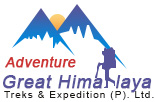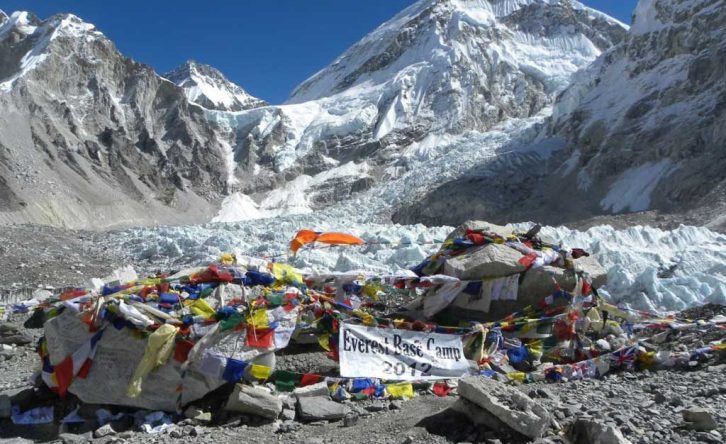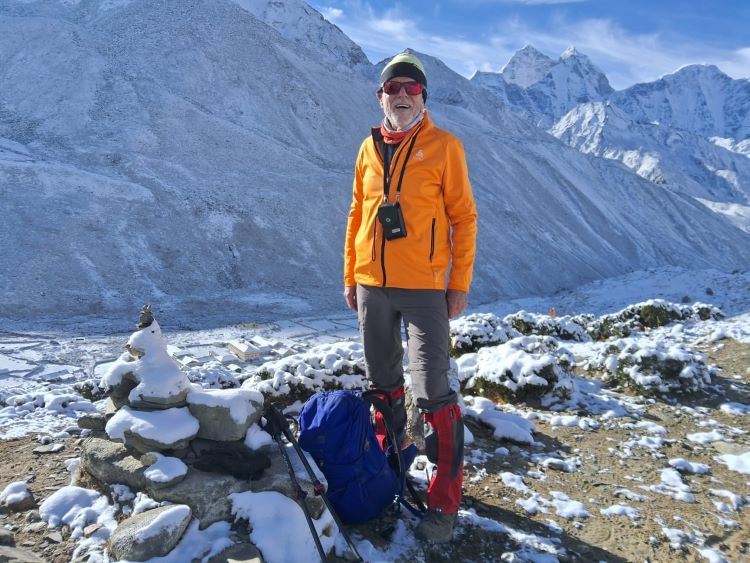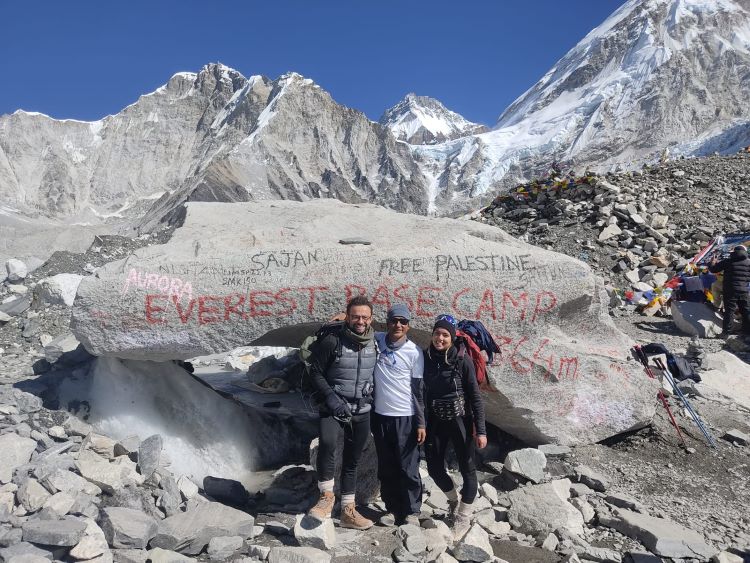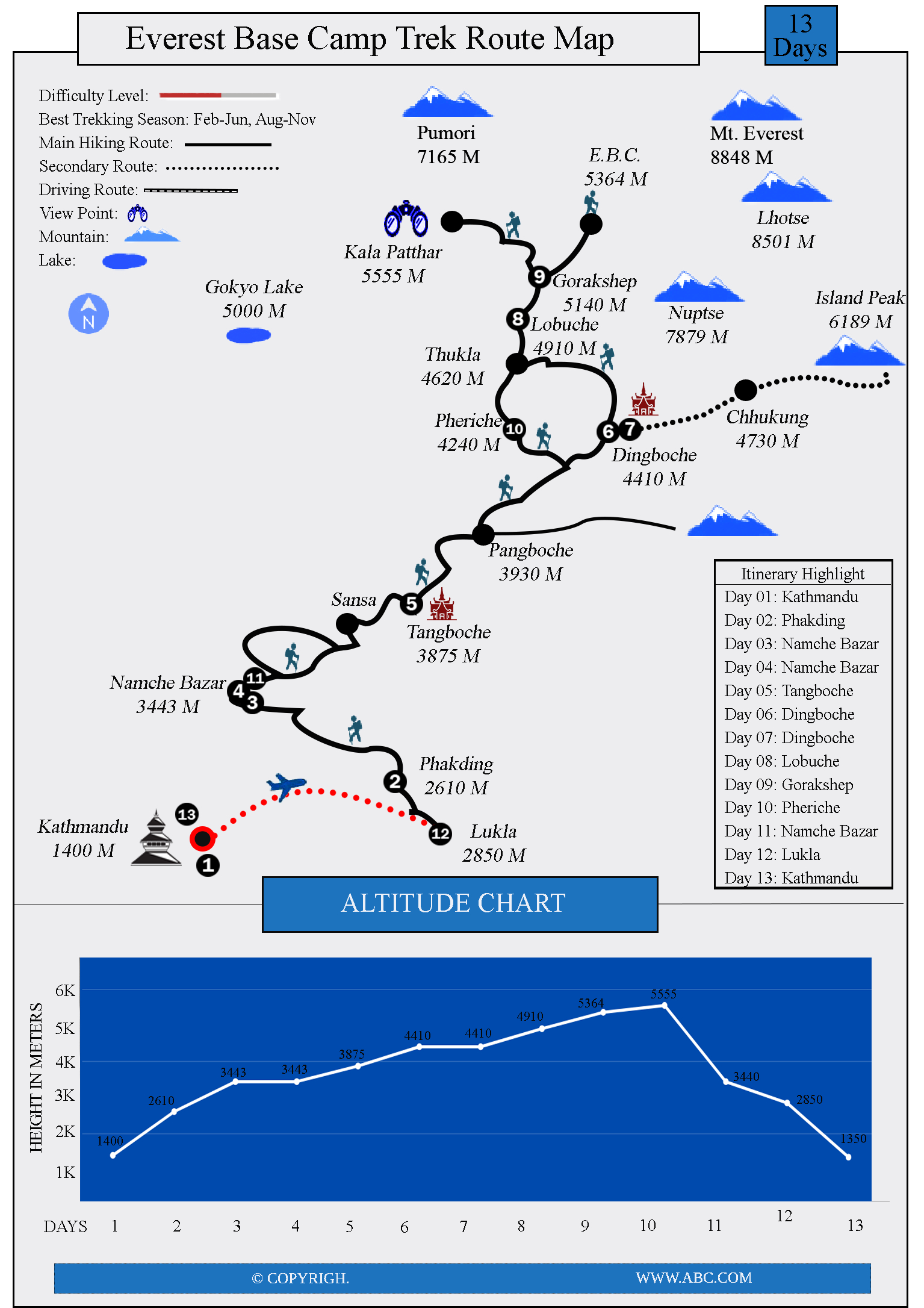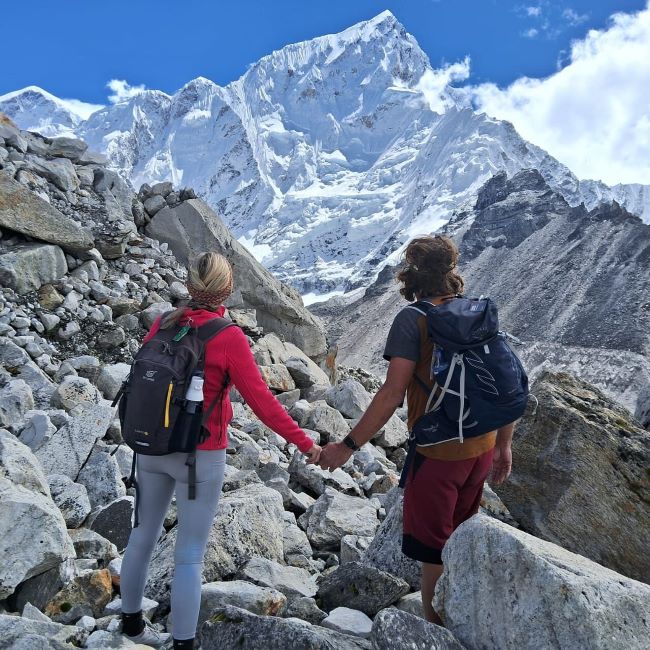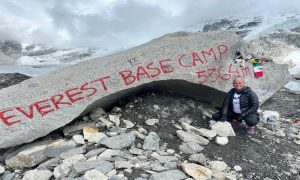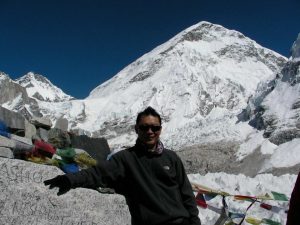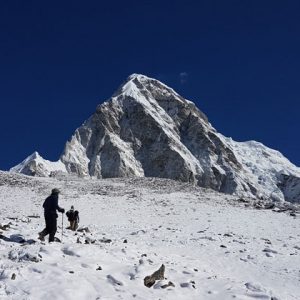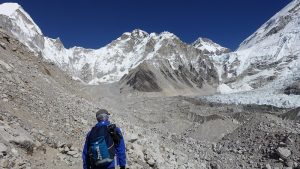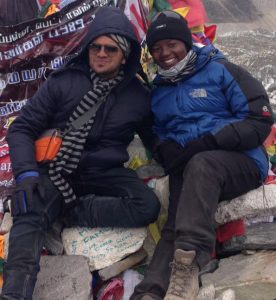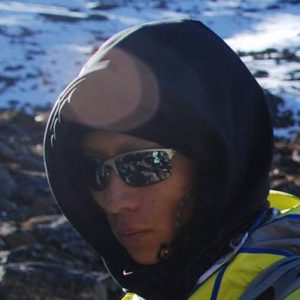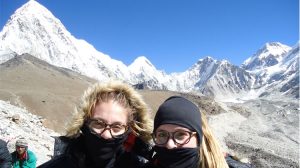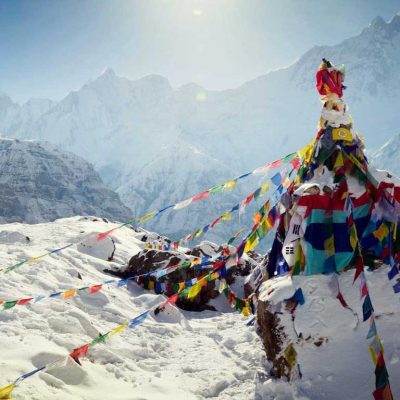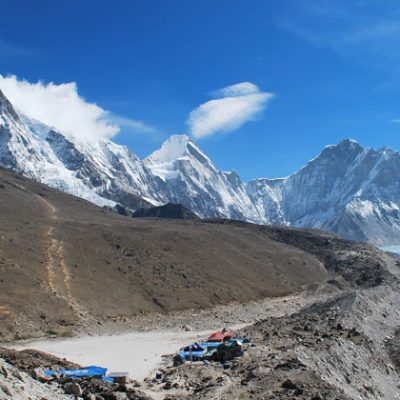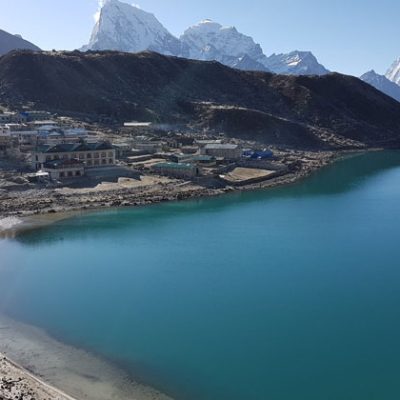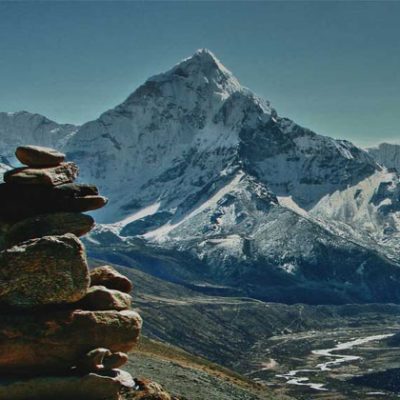Good To Know
Everest Base Camp Trek Difficulties
Everest Base Camp Trek is Moderate difficult level, The maximum elevation is 5545 meter, The risk of altitude sickness is always present. If you are taking some medication, you should consult your doctor for advice for trekking in such high-altitude regions. A right level of fitness will make the trek pleasant and comfortable.
Trekking to Everest Base Camp is straightforward with a good and wide path, walking 6 or 7 hours each day from 7 am after breakfast till 3 or 4 pm. Anyone who is reasonably fit will be able to complete this trek. There are no specific exercises for the trek, but some cardiovascular training is always recommended. You should start cycling, hiking, swimming, climbing, or hill walking at least two weeks before the trek.
The trek has a complete itinerary of 15 days and is therefore fit for those who have a long holiday planned and want to trek at a leisurely pace. The long trekking days also ensure that all the trekkers are properly acclimatized and relaxed even with a long day of trekking.
Best Time to Trek to Everest Base Camp
Arguably, the best time to trek to Everest Base Camp is the autumn season of September to November. The trek to Everest base camp from late September to November has many perks.
Some of the major highlights of the trek include the spectacular view of the mountains, moderate trekking temperatures, and unobstructed views of the mountains. There might be some instances of unfavorable conditions, which is quite common. The weather around the Everest Base Camp is quite unpredictable in comparison.
The amount of precipitation is quite less in lower elevations, and snowfall is less as you move higher along the trail. You should always check for weather conditions before you start the trek and prepare accordingly.
Besides this, the small window from March to May is also a great time to trek the Everest region. The trails look beautiful, and the rhododendron flowers bloom well over the hills, painting the hills red and pink. The Everest region has an excellent climate and weather, and the moderate temperatures make for a great trekking experience.
Everest Base Camp Trek Daily Distance & length
Everest Base Camp Trek, one of the iconic treks in the world, is about 130 km long in total. That means while you trek toward Everest Base Camp, you will cover 65 km. And 65 km more while returning from Everest Base Camp. You must cover a 130 km distance to complete it, starting and ending at Lukla.
The Everest Base Camp Trek distance is easy, moderate, or difficult. It depends on your experience level and preparation. If you have been on similar treks in the Himalayas, the trek’s distance is okay.
However, it can be a bit demanding and massive for beginners. You have to cover a distance of 15 km per day on average. The trail is rough, rocky, steep, slippery, and sometimes descends. The conditions might slow you down. Otherwise, 15 km a day is relatively easy. You’ll have around 6-10 hours daily to cover that distance. Come well-prepared to cover an average of 15 km per day. And you will have a walk of life.
Required Permit on EBC Trek
If you are going to trek to Everest Base Camp in 2025, you must have two necessary permits. This includes the Sagarmatha National Park Permit and the Permit issued by Khumbu Pasang Lhamu Rural Municipality. You no longer require a TIMS card, so do not worry about it. Both permits can be bought at the Nepal Tourism Board in Kathmandu or purchased directly in Monjo or Lukla if you have not previously arranged for this.
Have your trekking permits with you at all times, especially at military checkpoints. You will be checked at various points along the way, including Lukla, Jorsale, and Namche. Checks are made in both directions to make them easily accessible during the journey. Without them, you might be fined or stopped from proceeding. Also, make sure your passport is valid for more than six months. Take some passport photos to use during the permit process. Once your documents are arranged, you’re ready for the lifetime Everest Base Camp adventure.
Accommodation on EBC Trek
Accommodation on the Everest Base Camp trail has something for every budget. The most common choice is basic teahouses. There are unadorned rooms with two beds, a pillow cover, and a blanket. These rooms cost between $10 and $15 per night. For a good stay, one can opt for luxury options. It generally costs between $30 and $300 per night. Such options include electric blankets, private baths with extra space.
But wherever you sleep, prepare for basic facilities and little heat. While teahouses provide a minimum level of comfort, the luxury teahouses help provide more privacy and heat. Basic lodging is ideal if you don’t mind, great for those who are trying to cut costs. Whether you’re on a tight budget or prefer extra comfort, there’s something for everyone on the trail.
Hot Showers and Toilet facilities on EBC trek
On the Everest Base Camp trek, you will experience luxury and basic facilities at the same time. In lower towns like Namche Bazaar and Dingboche, you will enjoy western toilets, which are normally in your room. Higher to destinations like Lobuche and Gorakshep, you will encounter more basic squat toilets. Hot showers extend as far as Dingboche with a price of $5 to $6 for a tap shower.
The bucket showers are the norm Beyond Dingboche cost approximately $10 due to there being little plumbing. Where you find over 5,000 meters, teahouses generally don’t have tap showers. You will have to make do with shared, freestanding toilets instead. It is advisable to bring your own toilet paper and hand sanitizer as well, since these hygiene products are necessary where it is difficult and far off in the trek. That balance of comfort and simplicity is part of the unique Everest trekking experience.
Everest Base Camp Elevation and Altitude
The Everest Base Camp Trek involves extreme fluctuations of altitude. It starts in Kathmandu at 1,300 to 1,400 meters and ascends as far as Kala Patthar, 5,545 meters. Most of the trekkers begin at Lukla, 2,860 meters, and ascend progressively. Major waypoints along the trail are Namche Bazaar at 3,430 meters and Gorak Shep at 5,140 meters.
Everest Base Camp lies at 5,364 meters. The trek is designed to acclimate your body to the altitude. Daily ascents are normally 400 to 800 meters, but it’s better to stay below 500 meters a day to avoid the effects of altitude sickness. The final climb to Kala Patthar offers breathtaking panoramic views of the Himalayas at 5,545 meters, the highest point of your trek and one of the most memorable experiences of the trip.
What to Eat on the Everest Base Camp Trek
You’ll enjoy carb-loaded meals to keep you going on your trek. Classic Nepalese dishes like dal bhat (lentil stew, rice, and vegetables) or more Western favorites like pasta, pizza, and sandwiches are available. Thukpa (noodle soup) and momos (dumplings) are popular local dishes, while pancakes, porridge, and eggs for breakfast are common at teahouses.
You’ll also encounter Chauhan Pizza (more commonly with cheese or mushrooms) and fried rice on menus. The farther you go up, the more expensive, expect $8 to $10 per serving in lower villages and $10 to $15 higher up. Portions are huge, eat thoughtfully. Waste is taboo as ingredients have been brought in on yak, porter, or helicopter across tough ground. Stay with established standbys like dal bhat for reliable energy.
Drinking Water – Cost & Facility
Hydration during the Everest Base Camp trekking is important but do not drink tap water directly. When refilling at streams or taps, always use purification tablets because drinking untreated water will sicken you. The safest option is to buy boiled water at teahouses and it costs approximately $4 per liter.
Bottled water is also an option for between $3 and $5 per liter, but with altitude, the price increases. For the convenience of not letting plastic waste gather, it is advisable to drink boiled water or carry your purification gear along. Make arrangements for having your supply of water clean and consistent for your trek. Keeping in mind staying hydrated will make your trek safe and pleasant.
Hot Drinks
Hot drinks are a daily essential on the Everest Base Camp Trek. They keep one warm and energized as the temperature drops. Teahouses along the route have several options, ranging from black tea, milk tea, masala tea, lemon tea, mint tea, to green tea. Coffee is always available, normally instant but sometimes freshly brewed.
For sweet-toothed trekkers, hot chocolate is a great option. Such beverages range from $2 to $5 in lower regions and reach $5 to $7 at higher altitudes because of the difficulty in transporting supplies. After a day’s trekking, a hot drink is a soothing and welcome ritual.
Cold Drinks / Bar Drinks
On the Everest Base Camp Trek, you can get a range of cold and bar drinks at teahouses along the trek. If you want a fizzy soda or lemon beverage, you can expect to pay around $4 to $5 for a 600ml bottle. Coke and Sprite are available, but the price increases as you ascend in altitude. Beer is also a favorite, and you can get it for around $7 to $8 for a 500ml bottle.
For something a bit more potent, imported whisky and other liquor come between $10 to $40 for a 180ml pour. Local wines are a cheaper alternative, costing between $2 and $3 per glass. Do keep in mind, though, that alcohol makes altitude sickness worse, so try to consume it moderately. As much as it is tempting to go all out, do remember that it’s also necessary to keep yourself hydrated with water.
Important tips for a Successful Everest Base Camp Trek
- Select a good guide who will save you from danger during the trek. The path is trained to respond to emergencies and to know and guide you in the right direction.
- Travel Insurance will cover evacuation up to 5000 meters. Ensuring your travel insurance is important to require medical treatment at higher altitudes.
- Pack proper clothing and gear for the trek, along with essentials like a first aid kit, sunscreen, and any medications you might need.
- Start training before your trek by building your body to become stronger and focus on stamina to trek comfortably and with enjoyment.
- Drinking 2 to 3 liters a day of water by drinking plenty of water prevents altitude sickness and keeps you at your energy level.
- Let yaks and mules pass with loads, by must pass when you encounter them. Step over to the trail side and allow them to pass safely.
- Don’t push yourself, but be aware of your body if you are ill or are very tired to and stop to inform your guide.
Flying to Lukla: Understanding Flight Delays and Diversions
If you are trekking to Everest Base Camp, be prepared for a major change, Flights to Lukla will be diverted from Ramechhap during the peak trekking months March, April, October, and November due to increased air traffic and weather conditions. The drive from Kathmandu to Ramechhap takes about five hours, though the return trip may take longer depending on traffic. During the remaining months, flights to Lukla operate directly from Kathmandu.
This means an early departure and a bit of extra travel time won’t affect your trekking schedule or the experience that lies ahead. This detour is experienced by all trekkers, regardless of the tour company or flight. If bad weather delays flights from Ramechhap, helicopter service can be organized. Even with this change, a team member will still be present in Ramechhap to assist and arrange your transportation to the Lukla flight.
Lukla Flight Cancellation
Flights to Lukla can get canceled during bad weather conditions. However, there is an alternative option available. Helicopter rides are available for those who need to reach Lukla urgently. The cost for a helicopter ride generally ranges between $600 to $700. While this is more expensive, it ensures a direct and reliable route. When flights are not possible due to weather disruptions.
The Best Everest Base Camp Tours and Alternate Trekking Packages
Mount Everest Base Camp Trek is, without a doubt, one of the most remarkable and popular Himalayan trekking adventures. What makes the experience even more enticing is that there are several ways to trek to this popular base camp, which also includes the explorations of the popular highlights in the surrounding region.
Adventure Great Himalaya 15 Day Everest Base Camp Trek is a standard trekking package with two acclimatization days along the trekking trail. If you are looking for a short variant of the exploration, you can go for the 10 Day Everest Base Camp Trek.
The short packages are designed for trekkers who have limited time on hand. in the 10-day package, the trekkers have to complete the adventure without acclimatization day.
For a more extensive experience in this mainstream trekking region of Nepal, we also offer trekking to Everest Base Camp, including the adventure to the side highlights of the region like:
We also customize the single highlight exploration packages like 14 Day Gokyo Lake Trekking or just a simple 7 Day Everest View Trek that doesn’t take you to the high elevation points of the region.
However, the trekking packages are not all that we offer; we also oversee the climbing peak adventures in the region that you can add to your trekking adventure. Some of our most popular trekking peak expeditions in the 6,000-meter class inside the Everest region are:
Everest Base Camp Trek Cost 2024/25
The general duration of the Everest Base Camp Trek is 14 to 18 days, and the cost of the trekking packages varies depending on the itinerary plans. That’s why the cost of the trekking packages varies from US$ 1,250 to US$ 2,500 for standard packages.
If you want to add more luxurious amenities to your exploration, like our Everest Base Camp Luxury Lodge Trek, the cost can climb even higher. Great Adventure Himalaya offers the standard 15 Day Everest Base Camp Trek at just US$ 1,280.
This is the best value experience trekking package in the market at a reasonable cost. Your trekking package cost will include the cost for all accommodation & food, permits, guides and porters, domestic flights, land transportation, government expenses, and our official service charge.
Great Adventure Himalaya also offers a discounted rate for group bookings for your hike to Everest Base Camp. You can book for the standard EBC Trek at just US$ 1300 if your group has 4 to 8 people. If the group is even larger, with approx. 9 to 12 people, the package will cost only US$ 1,200.
**Note: If you want to explore the Everest region on your own, the package cost for the solo trekkers is US$ 1,500. However, the solo trekking package will not include the cost for porters**
Things to Avoid While Everest Base Camp Trek
- Respecting locals in such locations is the support system of the trekking activity. Always be kind and courteous to them.
- Donot bargain for meals and accommodation, as it is seen as rude while negotiating for food and accommodation in trekking locations. Prices are usually reasonable at it’s best to accept them as is.
- Don’t waste food is a valuable resource in remote areas where it is always takes what you can eat supply and you never waste anything. This is a sign of respect for the people and their resources.
- Have patience for delayed flights, as they may be delayed due to weather or other factors. Be patient, and instead of getting angry, as flight delays are common in such areas.
- Dress decently and avoid wearing bikinis or short clothes, which are considered disrespectful, especially in conservative areas. Be respectful of local culture and tradition.
- Ask for permission before you take pictures, as not everyone may wish to have their picture taken. Always ask first before you take a picture, especially with the locals.
- Eat at the lodge, you stay as you eat outside your lodge. You may be fined $40 to $50. Stick with the lodge meals to avoid being fined.
- Do not cook in your room, as it is forbidden to cook within your room in most lodges. Obey the laws for a trouble-free experience.
Required Travel Insurance
Travel insurance is mandatory if you want to begin your Everest Base Camp trek in Nepal. It is because no one can predict what mishaps can happen in the mountains, so having insurance covers these issues.
While choosing a company, make sure their plan covers all medical and travel problems like altitude sickness, emergency rescue, sprained ankle, and more. The insurance plan should be able to give you facilities like helicopter rescue, clinical attention, air ambulance, and so on.
Most importantly, many insurance companies do not cover treks above 4000 m, so make sure your cover trips above 5000 m altitude. With travel insurance, you can complete your expedition with no worries.
Tipping on EBC Trek – Recommended Amounts for Guides / Porters
Tipping is a lovely gesture to service providers around the world. And it is no new in Nepal’s trekking trails. After loving the service of their guides and porters, trekkers want to offer some tips to them. Tipping is not compulsory, but it can surely make your porter and guide’s day. It is all your choice.
As it is optional, there is no exact number for tipping. You can give as much as you like. Still, if we have to help with how much to offer, we would suggest you a suggestion. If your trek is ten days long, you can give them around USD 10 to 15 per day as a tip. So you can use this rate to tip your guide or porter. That is a standard tip amount. If you can give more or less, that is no problem.
There is no need to tip your team every day. You can just complete the trip and pay them at last. Make sure the given amount goes into the hands of the right people. You can use an envelope to give a gratuity.
EBC Trek Packing List – What to carry
For the Everest base camp trek, The following Items are recommended for every trekker , This List is only for Guide. There are numerous option brands and versions of each piece of equipment. EBC Trek Packing list
EBC Trek Booking : Terms and Conditions
Before preparing for your treks, you should carefully read the booking terms and conditions. If you wish to book your trip with us you should send a completed booking form and a scan of your passport along with a 20% amount of the trip.when you pay deposit then your trip is confirmed.
The trip deposit can pay by online, or pay directly through the bank, they impose a service charge. Please note that the initial booking deposit is not refundable if you cancel 45 days prior to departure
The remaining balance, you need to pay after arriving in Nepal. It is to be paid in USD or Nepalese rupees in cash before your departure. If you pay via debit or credit card, an additional fee of 13% will be charged to cover the tax and vat.
Why Everest Base Camp Trek with Adventure Great Himalaya Company
Adventure Great Himalaya Is one of The well-know Everest base camp Trek Company in Nepal, The Agency has been leading the Nepali trekking market as an expert for over a decade and houses expertise with over two decades of experience. In terms of quality of services and amenities, comfort, safety, and best value experience, you will be a leap ahead of other trekkers.
We are also an authentic Nepal-based trekking company and have been collaborating with the local experts of the region to add more enrich your overall experience. If you are planning to book the trek from foreign trekking companies, they don’t have the permit to organize the trip on their own and have to book services with a government-licensed company in Nepal.
So, you will only be paying the extra intermediaries fees for the same packages. Booking our services will ensure that you won’t need to pay any extra commission to a third party and will be able to enjoy an incredible excursion at the best-value cost.
Benefits of Hiring Services of Adventure Great Himalaya
- Trek packages designed to emphasize the utmost safety and comfort of the trekkers
- Best value price in the market
- Expert guides, government-licensed and with relevant number of experience
- Free airport pick-up and drop-off facilities
- Arrangement of sleeping bag and down jacket if necessary
- Free porter with 15kg weight limit per trekker
- Small group sizes allocation for a more immersive experience
- Customizable itinerary plans befitting your needs
- Transparent pricing and an extensive set of inclusions
- 24/7 available customer service and flexibility in itinerary adjustments
- Operation at a wide range of destinations
- Post trekking support
- Authentic testimonials and positive reviews
